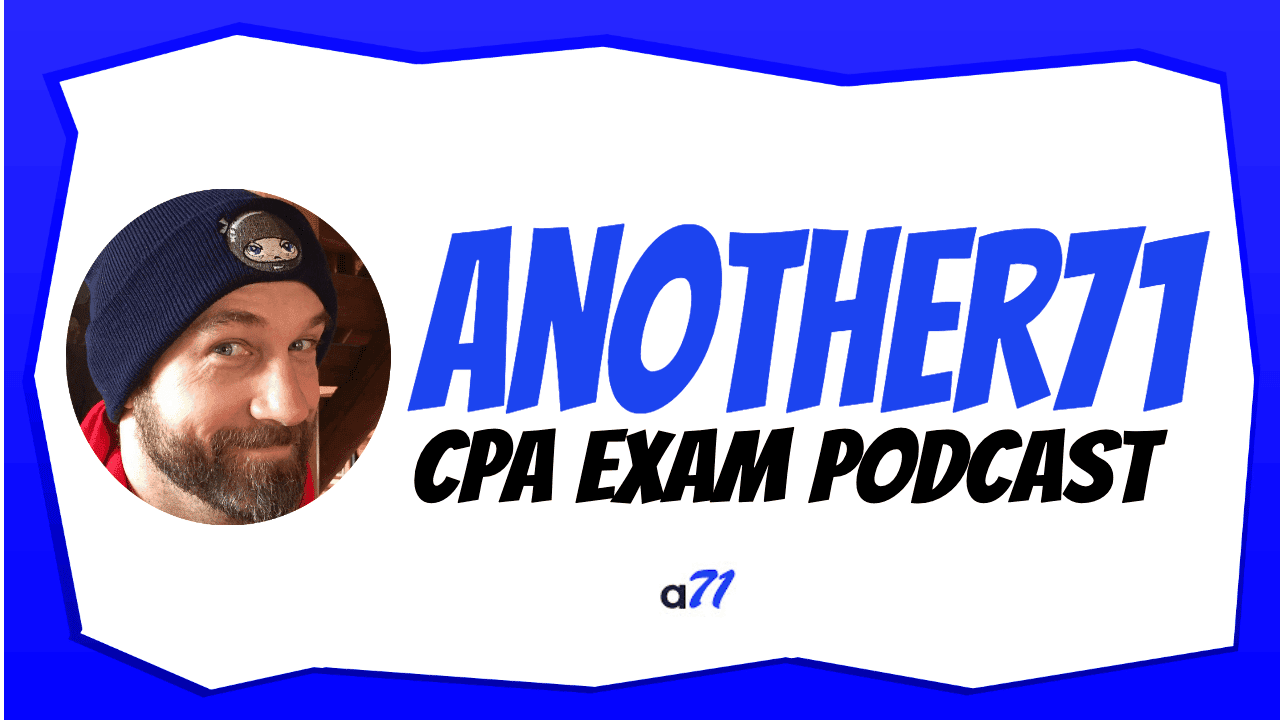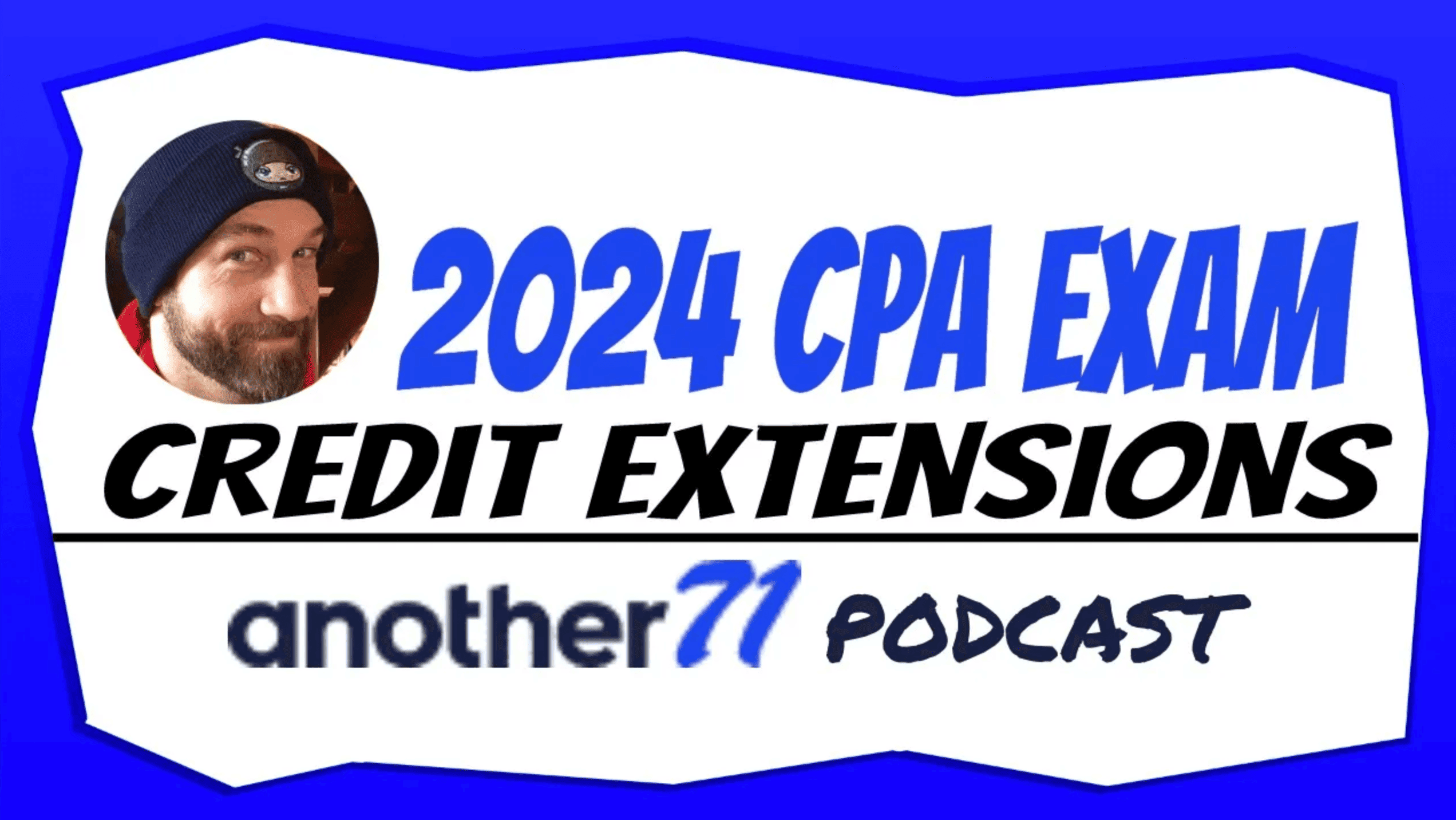
Please Note: This video was recorded prior to the newer 10% medical expense threshold rules.
Hello, everyone. Today, I want to go over just some pretty basic CPA Exam Regulation AMT topics, just for purposes of helping you pass the CPA exam. I realize that there are some tax professionals who might watch this and freak out over the simplistic nature of this explanation of AMT, but, really, you don't need to be an AMT expert to pass the regulation section of the CPA exam; you just need to be able to answer a few questions about CPA Exam Regulation AMT and then move on.
I don't think that you're going to need to answer some complex calculations and stuff like that; you just need to know the basics about AMT and, in particular, what items get added back to your taxable income for AMT purposes, and that's pretty much it.
Basically, AMT, you start with your regular taxable income, and then you have to add back some adjustments that were already removed from your adjustment gross income. On Schedule A, you can deduct your medical expenses in excess of 7.5% (old rule – it's now 10%) of your AGI. They put 7.5% because most people don't have that much medical expense, and so they don't use it; at least, I don't.
For purposes of AMT, whatever you deducted, in addition to 7.5%, now the threshold moves to 10%, so you have to add back any of that medical expense that falls under the 10%. Just remember that a medical adjustment is 10% of AGI, not 7.5%. If you deducted mortgage interest on your Schedule A that wasn't used for buying your home, improving it, or whatever, then you have to add that back, too. If you took out a loan on your house to pay off a credit care, it doesn't count for AMT; it has to be added back.
If you deducted any personal tax, like real estate tax, property tax, state and local tax for Schedule A, that gets added back, also. All the deductions that have the 2% threshold, they have to be greater than 2% cumulatively in order to count for your Schedule A. That gets added back, too.
For purposes of the CPA exam, just remember that the adjustments that get added back are 10% of medical, mortgage interest that wasn't used to improve or build a house, your real estate taxes, your property taxes, your state and local tax income tax, whatever, and then any miscellaneous deductions. That's what you need to know.
There's a few preference items, but for purposes of the CPA exam, I would make sure that I would know that for real estate purchased after 1987, if you took accelerated depreciation on that, whatever the difference is between the accelerated depreciation that you took, and straight line, you have to add that back, too. You have these adjustments and these preference items, and two more adjustments are, you cannot take your standard deductions for AMT, and no personal exemptions are allowed. You have your taxable income, you have your adjustments that you're adding back, and that brings you to your AMT, your Alternative Minimum Taxable income.
From that, you subtract an exemption, and, for purposes of the exam, don't memorize the exemptions. You can if you want; I didn't. I scored a 92 on Regulation, and I did not memorize that, so take that with a grain of salt, I guess, which brings you to your Alternative Minimum Tax base. That's kind of like your taxable income, so to speak, and so to that you apply, if this number is less than 175,000, and I'm using the 2011 numbers from the Wiley Book. If you apply a 26% rate for less than 175,000 … Don't memorize that number, it gives you a number; then you subtract a foreign credit for AMT, which brings you to your Tentative Minimum Tax.
For purposes of the exam, you need to know how we arrive here. Don't mess with the exemption stuff, but basically, you need to know how we get to this Tentative Minimum Tax number. Once we have the Tentative Minimum Tax number, then we take what our regular tax liability was, and then the difference is your Alternative Minimum Tax, your AMT. Whatever you pay can be carried forward indefinitely, but it can only apply to future regular tax liability; it cannot offset future AMT.
Let's do a few multiple choice questions. This is from the Wiley CPA Online Test Bank, and these questions are below this post. If you're on another71.com, or if you're watching this on YouTube, click the link right below the CPA Exam Regulation AMT video and it'll take you to the questions.
Number One: The Alternative Minimum Tax is computed as, the excess of regular tax over Tentative AMT, the excess of Tentative AMT over the regular tax. Tentative AMT over the regular tax, that's what it is. The answer's B. The credit for prior year Alternative Minimum Tax may be carried forward indefinitely 20 years, back to, carried forward 20, or back three, carried forward five. We just talked about, it can be carried forward indefinitely, and, again, it can only offset future regular tax liability; it can not offset future AMT.
In 2009, Joe, a single tax payer, had $80,000 in taxable income before exemptions. He had no tax preference items, and his itemized deductions were as followed: real property taxes of $4,000, so $4,000. Home mortgage interest on the loan to purchase residence, which is okay, and miscellaneous deductions in excess of 2% of AGI of $2,000. He made $80,000, and what amount did he report as his Alternative Minimum Taxable income? So, 80 plus six, $86,000, and the answer's B, $86,000.
When determining his Federal Income Tax, Curt had the following items for 2009: personal exemption of $3650, so $3650. Itemized deduction for personal property taxes of $2500. Property taxes right there, $2500. That's $6150. Charitable contribution of capital gain property, that's okay. Net long-term capital gain, that's okay. Excess of accelerated depreciation over straight line on real property, placed in service after '87 of $600. Tax exempt interest from the City of Chicago, general obligation bonds. That also is okay. We add up our preference items at $600; we add up our adjustments of $6150, and that the answer's B.
Last question: Which of the following itemized deductions are deductible when computing AMT? State income taxes, is that deductible? No. Home equity mortgage interest when the loan proceeds were used to purchase an auto? No, only if it's used to purchase a home or improve the home. Medical expenses amounting to 10%? It says that it amounted to 10%; it'd have to be in excess of 10% to count. Home equity mortgage from the loan proceeds when used to add an additional room to the house, and that is true. The answer is D.





